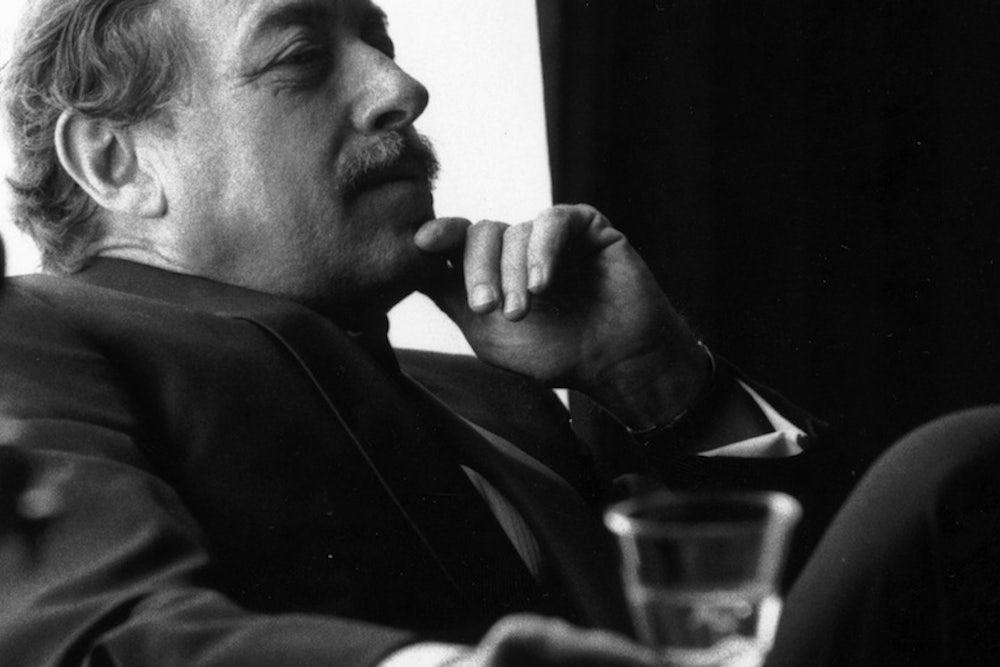One of the most hyped books of the season, Olivia Laing’s The Trip to Echo Spring: On Writers and Drinking, profiles six writers—John Berryman, Raymond Carver, John Cheever, F. Scott Fitzgerald, Ernest Hemingway and Tennessee Williams—whose drinking habits are as legendary as their work. Weaving stories from her own family's history of alcohol abuse in with her subjects', she traces their footsteps from the Broadway suite where Tennessee Williams choked on a bottle cap, “surrounded by pills and paper, two bottles of wine open on his nightstand,” to Port Angeles, Washington, where Carver died at just 50 years old.
Laing diligently documents the destruction these writers’ drinking wreaks on their families, friends, health and careers, but she neglects a body of research that can elucidate the complex relationship between alcohol and creativity. She overlooks the fact that these men’s alcohol consumption didn’t stop them from producing some of the best writing of the century—and she barely entertains the possibility that alcohol may have had a positive impact on their work. She seems to totally trust her subjects when they’re chastising themselves for drinking, but dismisses them when they credit alcohol with fuelling the creative process.
For instance:
Fitzgerald wrote: “Drink heightens feeling. When I drink, it heightens my emotions and I put it in a story…My stories written when sober are stupid.”
But Laing doesn't buy it: “It’s hard not to read this as justification, particularly since he was already bitterly regretting the necessity of writing so much of Tender drunk.”
Or:
Cheever: “As he [the writer] inflates his imagination, he inflates his capacity for anxiety, and inevitably becomes the victim of crushing phobias that can only be allayed by crushing doses of heroin or alcohol.”
Laing: “Writers are indeed under unusual strains, and yet what this statement really conveys is an unwillingness to accept responsibility that is apparent in all alcoholic excuse notes.”
The link between drinking and creativity has been romanticized to the point of cliché, but Laing would be more convincing if she didn’t ignore it. Of course, the concept of creativity is difficult—if not impossible—to measure or even define. But that hasn’t stopped scientists from trying—and there are at least a few studies suggesting a positive correlation between alcohol consumption and creative work.
Alcohol facilitates creative problem-solving
In one of the only empirical studies, Andrew Jarosz, a psychologist at the University of Illinois at Chicago, examined the effects of tipsiness on creative problem-solving for a paper in the journal Consciousness and Cognition 2012. Jarosz hypothesized that “moderate alcohol intoxication may in fact lead to less attentional control or a more diffuse attentional state, which in turn could improve performance on creative problem solving tasks.” To quantify creativity, they used the “Remote Associates Test” (RAT), a test devised in the 1960s that asks test-takers to come up with a word that connects three given words. (For instance: “cream”, “skate” and “water” all relate to the word “ice.”) “The RAT,” Jarosz explains, “is thought to involve creative problem solving because the most salient potential responses to the problem are often incorrect, and one must retrieve more remote associates in order to reach solution.”
Jarosz and his colleagues recruited 40 undergraduate men who identified as social drinkers. He had half his subjects drink vodka cranberries until they achieved a blood alcohol content of 0.075, while the other half remained sober. When the drinking group had reached peak intoxication, Jarosz administered the RAT test. As he predicted, the drinking group outperformed their sober counterparts, solving more of the RAT questions in less time—they answered an average nine questions in 11.5 seconds, compared to the sober group who solved six questions in 15.2 seconds.
Try it at home: Here’s the RAT test. You can figure out here the number of drinks you need to reach a BAC of 0.075.
Alcohol helps artists relax
In 1995, Swedish psychologists Ronald Gustafson and Torsten Norlander looked at a different aspect of the creativity-alcohol relationship: They set out to test not whether alcohol encourages creativity, but whether creative endeavors—which may be “exceptionally strenuous”—actually “induce a greater need for restitution” (i.e. alcohol). They recruited 42 undergraduate students and assigned them to spend 40 minutes engaging in “hard creative work” (involving tasks like coming up with as many uses as possible for an ambiguous 3D model), “light creative work” (similar tasks but taking two-minute breaks every two minutes) and “non-creative work” (scanning three- and four-dot formations and circle the four-dot ones). After the work was ever, Gustafson and Norlander offered them alcoholic (vodka tonics) and non-alcoholic drinks (plain tonic water). As they expected, the group that had worked on the hard creative task drank the most alcohol; the light creative group came in second.
People prefer the drawings they make while tipsy
In a small study, for a paper presented at the Association for Computing Machinery’s conference on creativity and cognition in 2009, Jesse Smith of the Georgia Institute of Technology had 12 participants play a creative “game” like writing a ten-word story on a given topic, composing a haiku, or drawing a picture based on a Rorschach ink blot. For the first round, everyone was sober; each subsequent round began with a Jell-O shot, and participants were encouraged to stop drinking once they felt “moderately drunk in their own opinion.” At the end of the study, participants reviewed their efforts and ranked them in terms of how creative they felt they were. Though the sample size was too small to draw meaningful conclusions, there seemed to be a correlation between inebriation and more creative work; Smith concluded, “Our overall impression of the trend was positive: alcohol did appear to improve the creativity of the majority of our participants.”
